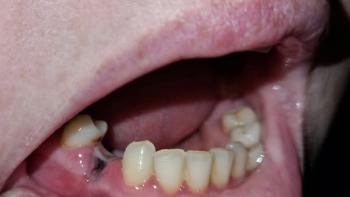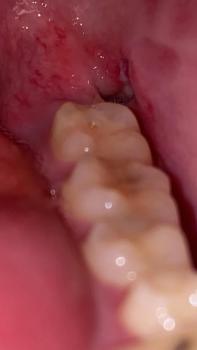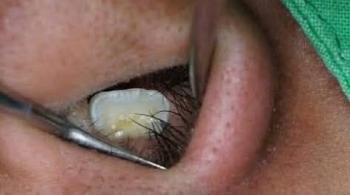Building Confidence One Smile at a Time.
Do Braces Really Change Your Jawline? The Surprising Effects of Orthodontics

When people think of braces, they usually imagine straighter teeth and a perfect smile. But what many don’t realize is that orthodontic treatment can also subtly—or sometimes dramatically—reshape your jawline, facial symmetry, and overall profile.
So, do braces really alter your jawline? The answer is yes—but not in the way you might expect. Let’s dive into the science, the myths, and the latest innovations in orthodontics that can redefine your facial structure.
How Braces Influence Your Jawline & Facial Structure
1. The Biomechanics of Braces: More Than Just Teeth Movement
Braces don’t just shift teeth—they influence the underlying bone structure. When constant pressure is applied (via brackets, wires, or aligners), the alveolar bone (the bone that holds teeth) remodels itself over time. This can lead to:
-
Improved jaw alignment (especially in cases of overbite, underbite, or crossbite)
-
Enhanced chin projection (reducing a "weak chin" appearance)
-
Subtle changes in lip support (affecting facial fullness)
Critical Insight:
Some studies suggest that orthodontic treatment in growing patients (children/teens) can guide jaw development more effectively than in adults, since their bones are still forming. However, modern techniques (like surgical orthodontics or adult palate expansion) can still achieve significant changes.
2. The "Braces Face" Myth: Fact vs. Fiction
A viral TikTok trend once claimed that braces could cause "facial distortion" or a "sunken" look. But is this true?
Fact:
-
In severe overbite correction, retracting upper teeth can slightly reduce lip fullness.
-
In underbite cases, advancing the lower jaw can strengthen the chin.
Fiction:
-
Braces do not shrink your face—they optimize jaw function.
-
Any "sunken" appearance is usually due to extractions without proper space management (an outdated practice).
Latest Practice:
Today, orthodontists prioritize non-extraction treatments where possible, using temporary anchorage devices (TADs) or expansion techniques to avoid unwanted facial changes.
3. Beyond Traditional Braces: How Modern Orthodontics Reshapes Faces
Innovations in orthodontics now allow for targeted jawline enhancement:
-
Invisalign + Jawline Sculpting – Some patients use mandibular advancement aligners (like Invisalign’s Mandibular Advancement Feature) to subtly improve jaw definition.
-
Surgical Orthodontics (Orthognathic Surgery) – For severe jaw misalignment, braces are combined with surgery to reposition the jaw for optimal facial balance.
-
Myofunctional Therapy – Strengthening tongue and facial muscles can complement braces for better long-term facial structure.
4. Real Patient Transformations: Before & After Insights
Looking at case studies from clinics like Justin Dental & Braces, we see:
-
Overbite Correction → More defined chin and balanced lips.
-
Underbite Fix → Smoother jawline and improved profile.
-
Expansion Treatments → Wider smile and better cheekbone support.
The Future of Orthodontics: AI, 3D Modeling & Personalized Jawline Design
The next frontier? AI-driven treatment planning where orthodontists can simulate facial changes before even applying braces. Companies like DentalMonitoring now use facial scans to predict how tooth movement will affect soft tissues (lips, cheeks, jawline).
What’s Next?
-
"Jawline Optimization" Braces – Customized treatment for facial aesthetics, not just teeth.
-
Biostimulatory Techniques – Low-level laser therapy (LLLT) to accelerate bone remodeling.
-
Epigenetic Orthodontics – Using genetic insights to guide jaw growth in kids.
Final Verdict: Do Braces Change Your Jawline?
Yes, but…
-
The changes are subtle yet impactful—think "enhanced harmony" rather than a complete face overhaul.
-
Modern techniques minimize risks of unwanted facial changes.
-
The best results come from personalized treatment plans—not one-size-fits-all approaches.
Thought-Provoking Question:
If braces can tweak your jawline, should orthodontists also be considered "facial architects"?
For those considering braces, the key takeaway is: Choose an experienced orthodontist who considers facial aesthetics—not just teeth alignment.
Looking for dentist : Visit directory list
CEBUANO TRANSLATION
Makapausab ba og porma sa imong apapangig ang braces? Oo – apan dili sa paagi nga imong gihunahuna.
Giunsa Pag-apekto sa Braces ang Apapangig ug Nawong:
-
Biomekaniks sa Braces – Dili lang pagbalhin sa ngipon:
-
Makapausab sa bone structure ilawom sa ngipon (alveolar bone).
-
Makapahiusa sa apapangig (labina sa overbite, underbite, crossbite).
-
Makapalig-on sa dagway sa baba ug dunggan.
-
Makaapekto gamay sa pagburos sa mga ngabil.
Insight: Mas epektibo ang braces sa kabataan kay padayon pa ug tubo ang ilang mga bukog. Apan sa karon, puwede gihapon ni sa hamtong gamit ang surgical orthodontics ug palate expansion.
-
-
Ang “Braces Face” nga Mito – Tinuod ba?
-
Tinuod: Ang sobrang retraction sa ngipon sa taas makapagamay gamay sa ngabil.
-
Dili Tinuod: Ang braces dili makapa-"sunken" sa nawong – ang sayop nga extraction treatment ang hinungdan.
Bag-ong Praktis: Gigamit karon ang TADs ug expansion techniques aron malikayan ang dili gustong facial changes.
-
-
Modernong Orthodontics:
-
Invisalign + Jawline Sculpting – Gigamit ang mandibular advancement aligners.
-
Surgical Orthodontics – Para sa seryoso nga alignment, gi-combine ang braces ug surgery.
-
Myofunctional Therapy – Pagsanay sa tongue ug facial muscles para sa lig-on nga facial structure.
-
-
Tinuod nga Pagbag-o sa mga Pasiente:
-
Overbite → mas defined nga baba.
-
Underbite → mas smooth nga profile.
-
Expansion → mas halapad nga pahiyom ug lig-on nga cheekbone support.
-
Ang Kaugmaon sa Orthodontics:
-
AI & 3D Modeling – makita daan ang posibleng resulta sa braces.
-
Jawline Optimization – treatment nga gi-personalize para sa nawong.
-
Laser & Epigenetics – paspas nga bone remodeling ug genetic-guided growth.
Konklusyon:
-
Oo, makausab ang braces sa nawong – apan mas subtle.
-
Importante nga mopili ug orthodontist nga naglantaw sa aesthetic, dili lang sa ngipon.
TAGALOG TRANSLATION
Nakakapagpabago ba ng hugis ng panga ang braces? Oo – pero hindi sa inaakala mo.
Paano Naapektuhan ng Braces ang Panga at Mukha:
-
Biomekaniks ng Braces – Hindi lang sa ngipin:
-
Binabago ang buto sa ilalim ng ngipin (alveolar bone).
-
Inaayos ang pagkaka-align ng panga (lalo sa overbite, underbite, o crossbite).
-
Pinapalakas ang projection ng baba.
-
Kaunting epekto sa suporta ng labi.
Insight: Mas epektibo ito sa kabataan dahil umuunlad pa ang buto. Pero may mga bagong paraan din para sa matatanda tulad ng surgical orthodontics.
-
-
Ang “Braces Face” Myth – Totoo ba?
-
Totoo: Kapag sobra ang pag-atras ng ngipin, nababawasan ang fullness ng labi.
-
Hindi Totoo: Hindi pinapaliit ng braces ang mukha. Mali lang ang mga lumang treatment tulad ng extraction na walang tamang space planning.
Makabago: Gumagamit na ng TADs at expansion para maiwasan ang facial distortion.
-
-
Makabagong Orthodontics:
-
Invisalign + Jawline Sculpting – Para sa mas defined na panga.
-
Surgical Orthodontics – Para sa malubhang misalignment.
-
Myofunctional Therapy – Pinapalakas ang facial muscles para sa mas magandang structure.
-
-
Tunay na Pagbabago sa Mga Pasyente:
-
Overbite → mas defined na baba.
-
Underbite → mas maayos na jawline.
-
Expansion → mas malapad na ngiti at cheekbones.
-
Ang Hinaharap ng Orthodontics:
-
AI at 3D Modeling – Maaaring makita na ang epekto bago magsimula.
-
Jawline Optimization Braces – Para sa facial aesthetics.
-
Laser at Genetic Approach – Para sa mas mabilis na bone remodeling.
Pangwakas:
-
Oo, binabago ng braces ang mukha – subtle pero makikita.
-
Pumili ng orthodontist na iniisip ang kabuuang anyo ng mukha, hindi lang ngipin.
NORWEGIAN TRANSLATION
Kan tannregulering forandre kjevelinjen din? Ja – men ikke på den måten du kanskje tror.
Hvordan regulering påvirker kjeve og ansiktsstruktur:
-
Biomekanikken bak regulering – Mer enn bare tenner:
-
Regulering påvirker benstrukturen under tennene (alveolær ben).
-
Forbedrer kjevejustering (f.eks. overbitt, underbitt, kryssbitt).
-
Øker hakens fremtreden (reduserer "svak hake").
-
Endrer leppestøtte litt (påvirker ansiktsfylde).
Viktig å vite: Regulering hos barn/tenåringer er mest effektiv fordi bein fortsatt utvikler seg. Men moderne teknikker som kirurgisk regulering fungerer også for voksne.
-
-
"Braces Face" myten – Fakta vs. fiksjon:
-
Fakta: Tilbakeføring av overkjevetenner kan redusere leppefylde.
-
Fiksjon: Regulering gjør ikke ansiktet "innsunken". Dette skyldes ofte gamle metoder med tanntrekking uten god plassplanlegging.
Nytt i dag: Ortodontister bruker midlertidige anker (TADs) og utvidelsesteknikker for å unngå uønskede endringer.
-
-
Moderne ortodonti:
-
Invisalign + Kjeveskulpturering – Forbedrer kjevelinje med spesielle skinner.
-
Kirurgisk regulering – Kombinerer kirurgi og regulering for optimal balanse.
-
Myofunksjonell terapi – Trening av tunge og ansiktsmuskler for bedre ansiktsstruktur.
-
-
Ekte pasientforvandlinger:
-
Overbitt → mer markert hake og balanserte lepper.
-
Underbitt → jevnere kjevelinje og profil.
-
Kjeveutvidelse → bredere smil og sterkere kinnbein.
-
Fremtiden for regulering:
-
AI & 3D-modellering – Ortodontister kan forutsi endringer før behandling starter.
-
Skreddersydd estetikk – Designet med tanke på ansiktsform, ikke bare tenner.
-
Biostimulering og epigenetisk styring – Bruker lys og genetisk info for raskere resultat.
Konklusjon:
-
Ja, regulering kan forandre kjevelinjen – subtilt men merkbart.
-
Velg en erfaren ortodontist som tar hensyn til hele ansiktets estetikk, ikke bare tannstilling.












